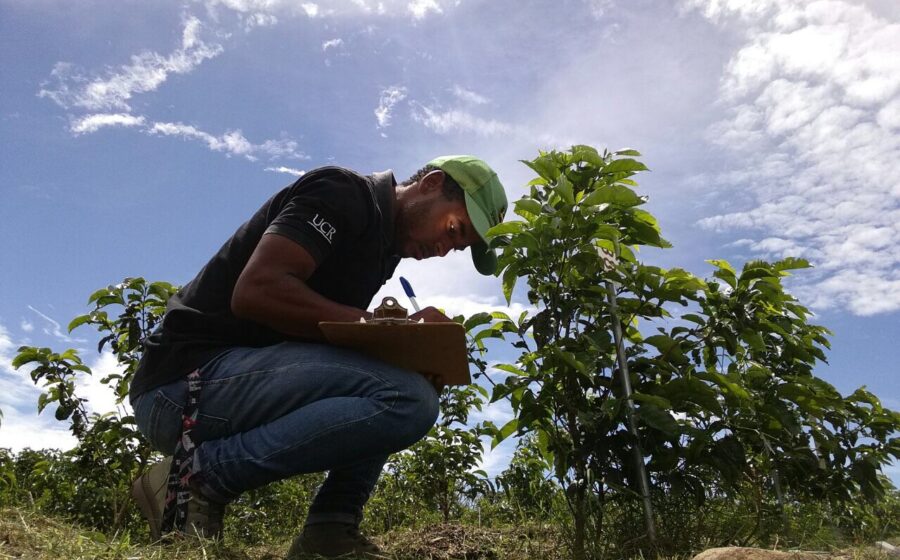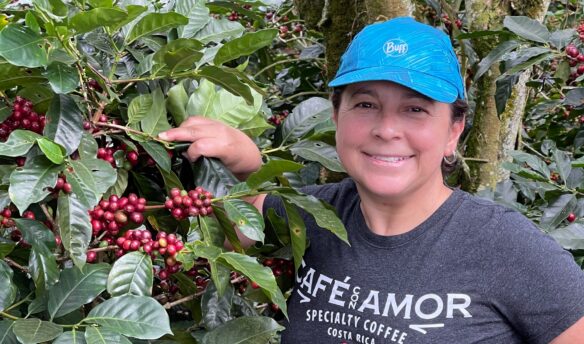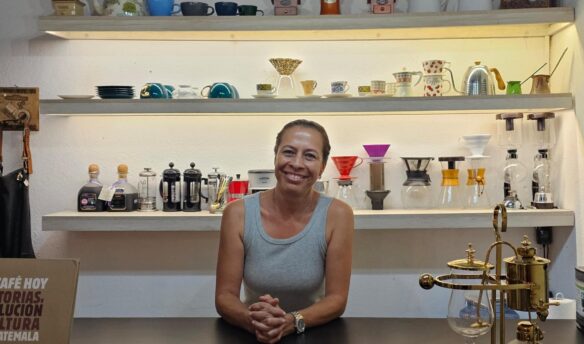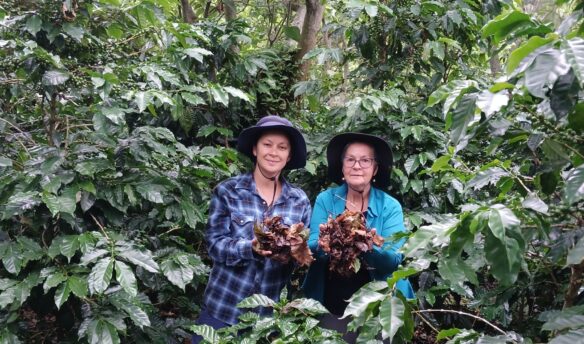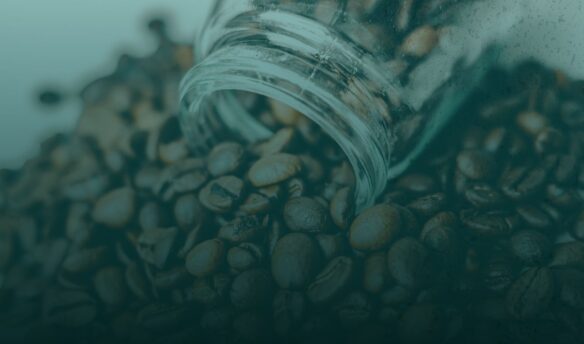Coffee is under serious threat. Researchers predict that by 2050, coffee production could be reduced by up to 50% due to factors like disease, pests, drought, and rising temperatures. Amidst these challenges, organizations like World Coffee Research, a non-profit organization formed in 2012, are conducting research and developing innovative new growing strategies in the coffee agriculture space to ensure the future of the industry.
“We work urgently to make better plants available and accessible to farmers to enhance coffee productivity, profitability, quality, and climate resilience,” says Hanna Neuschwander, director of strategy and communications for World Coffee Research. “In particular, we support the professionalization of nurseries and seed systems, conduct variety trials, and accelerate breeding system modernization.”
Breeding, the science of creating genetically improved plants through the selection and combination of desirable traits, could be one solution for the issues coffee is currently facing. Researchers at WCR are hopeful that breeding new varieties and hybrids of coffee will increase resilience to threats while improving yields and cup quality for years to come.
The Need for Breeding New Varieties
Coffee, particularly Coffea arabica (arabica coffee) and its varieties, which account for 60% of all coffee grown, currently faces numerous threats. “Older varieties might have very low yields, be susceptible to pests/disease, have low cup quality, or lack climate resilience (it depends on the variety and the farm)—but for sure, most farmers do not have optimized varieties for their situations,” says Neuschwander.
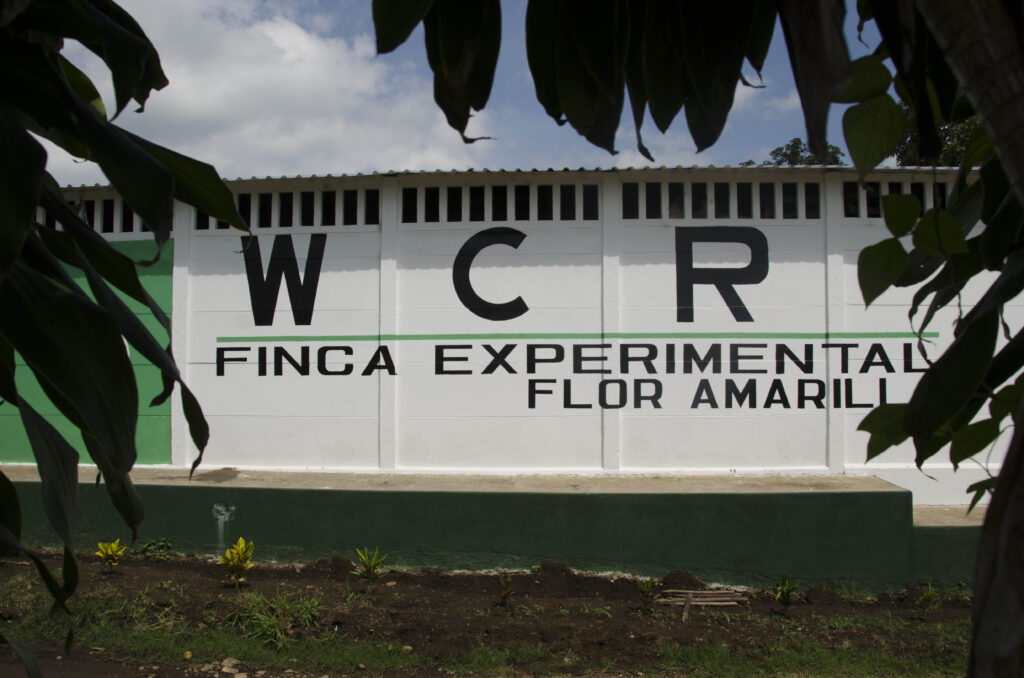
Some problems, like leaf rust, a fungus that spreads quickly and kills coffee plants, affect coffee plants worldwide. Other issues are more localized, like coffee berry disease, which plagues green coffee cherries and has devastated coffee plants in Africa.
Furthermore, most arabica varieties are not heat or drought-resistant. If there is a fluctuation in temperature, whether a short or a long-term change, the trees will begin to suffer. Along with the other threats climate change poses on coffee—from unpredictable weather patterns affecting harvest schedules to wildfires burning down entire farms—genetically, many coffee varieties cannot withstand changing temperatures: “Varieties that are not adapted to higher heat (including higher nighttime temps) will gradually lose performance. Right now, this is most arabica varieties. First, cup quality is affected, then yields. Severe heat can cause mortality”, says Neuschwander.
Robusta, which accounts for the remaining 40% of coffee produced, is generally heartier and more capable of growing in higher temperatures than arabica, but it’s still not perfect—robusta varieties are still sensitive to drought and colder temperatures and susceptible to pests and disease.
Throughout agricultural history, humans have bred crops to ensure that they can withstand pests and hotter or colder weather, as well as to improve yields and quality. Virtually every crop you see in the grocery store produce section has been bred in some way: to taste better, be larger, or even make fruits or vegetables more uniform.
But that hasn’t happened in coffee—at least, not to the extent it has for other crops. ” Coffee is facing an innovation crisis,” says Neuschwander. “It is one of the most under-researched and under-innovated crops in the world, despite its huge global economic value.” Part of the reason coffee lags behind is a lack of funding for research and development. In a white paper published in July of 2023, WCR identified a lack of investment in coffee research. The industry needs “$452 million more per year to be invested in coffee agriculture R&D to preserve origin diversity across many countries and support farmers to adapt to climate change.”
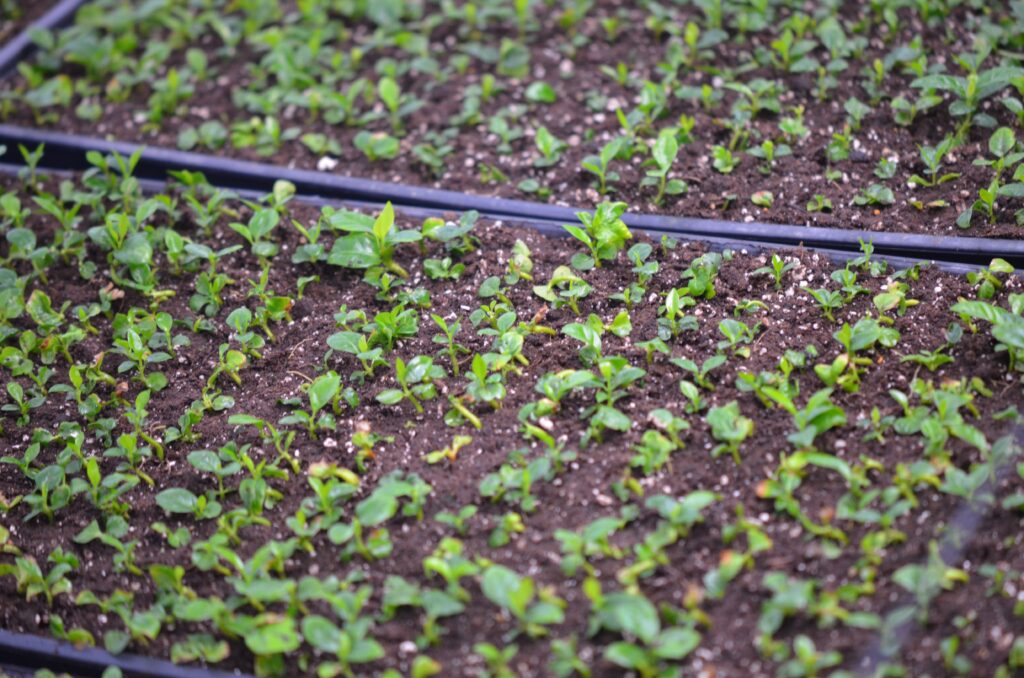
Neuschwander shared an example of how far behind coffee is in terms of breeding: “Over the last few decades, strawberry breeders have developed over 6,640 unique strawberry varieties to support the success of farmers,” she says, referring to numbers from the International Union for the Protection of New Varieties of Plants. “Coffee breeders have produced only 111 varieties in the same timespan.”
New Varieties Emerging
Implementing solutions can’t happen overnight. Coffee breeding is a long process, and breeding new varieties takes a minimum of 15-20 years.
Neuschwander said the coffee plant varieties from the WCR’s Innovea Global Coffee Breeding Network will reach farmers in 2033 at the very earliest. This global network consists of nine coffee-producing countries, including Costa Rica, the USA, India, Indonesia, Kenya, Mexico, Peru, Rwanda, and Uganda.
The goal of the program is to collaborate to develop diverse coffee breeding populations and finished varieties tailored to local conditions and market demand. The network focuses on producing genetically diverse breeding populations, which are distributed to those participating every six years to support national breeding programs with improved varieties. WCR supports its partners with investments in capacity building, and the participating countries are responsible for the final development and release of finished varieties.
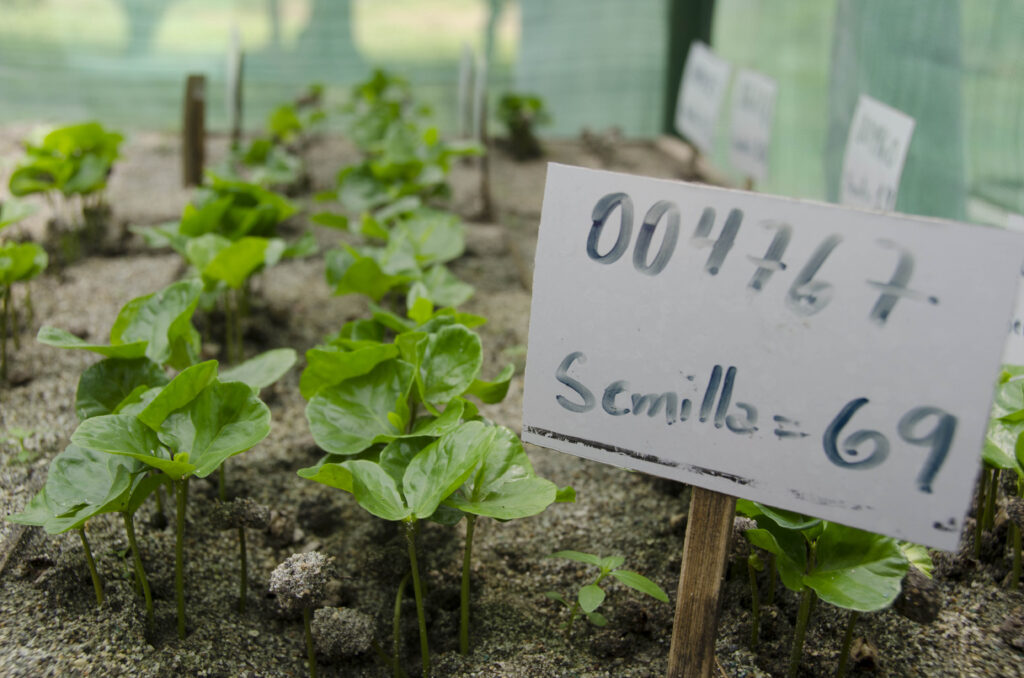
New varieties may be available sooner; WCR also works collaboratively with public breeding programs in coffee-producing countries. For example, the organization’s International Multilocation Variety Trial is testing 31 high-performing varieties from 11 breeding programs in 18 countries—most of those varieties had never been tested outside a single country.
In this trial, researchers will examine how varieties perform under climates predicted for 30-50 years into the future. This includes testing varieties in extreme environments with high temperatures and extended dry periods and seeing how they perform in different local environments. Researchers will then identify the traits that allowed different varieties to adapt and use this to advance coffee breeding to future-proof coffee.
In 2022, the Indonesian Coffee and Cocoa Research Institute partnered with WCR to showcase a high-performance coffee variety called Komasti to local farmers in West Java. Komasti has been around since 2013 but wasn’t heavily promoted or adopted, so the two organizations worked together to set up a demo plot for farmers to see and learn about the coffee. The first harvest of Komasti is anticipated to occur between May and July 2025. Already, farmers have observed that Komasti is “more vigorous in the early growth phase compared to existing varieties currently being cultivated locally,” said Nuzul Qudri, WCR’s regional project manager in Asia.
Outside of WCR, there are other examples of progress—and success—in coffee breeding. Cenicafé, a coffee research center, used its wild coffee gene bank in Colombia to develop leaf rust-resistant varieties suited to grow in different regions throughout the country. One of these varieties, Castillo, was heavily promoted, and by 2017, nearly 75% of the coffee trees in Colombia were leaf rust-resistant.

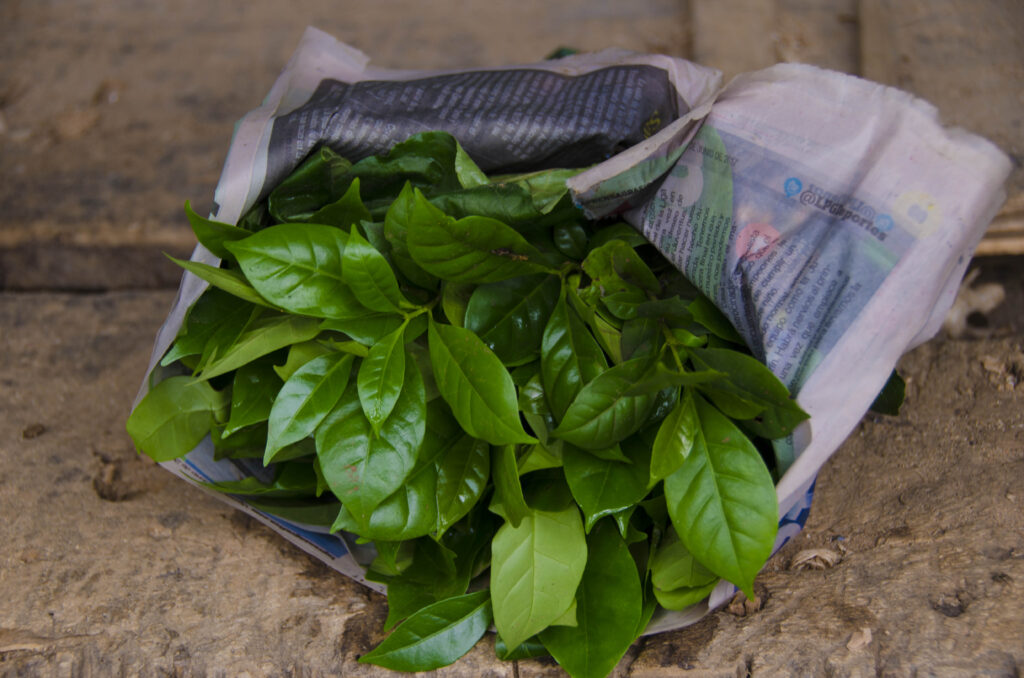
In October 2023, Starbucks announced it had developed six arabica varieties that are climate resilient and adapted to resist leaf rust. The company is giving away its new coffee tree varieties to farmers across 30 countries, who are free to sell the crop to buyers outside of Starbucks.
The year 2050 holds some dire predictions for coffee production, but coffee breeding provides a potential bright spot. With organizations like WCR investing in new breeding technologies, there’s hope that farmers will have access to coffee varieties that can fare better in the face of climate change.
And the time is now to act. “We are already seeing rapid consolidation (e.g., more coffee coming from fewer places), and that is very likely to continue,” says Neuschwander. “There will be fewer farmers in fewer places, and that means less diversity in what coffees we can access. For coffee drinkers, it probably means that overall quality will decline; some amazing and wonderful specialty coffees will continue to be available, but they will get even more expensive. Increasing regulations (such as Europe’s recent deforestation legislation) will put more pressure on farmers too.”
While the future of coffee sounds quite uncertain at the moment, Neuschwander reminds us to be hopeful: “That all sounds bad, but I also think there will be huge and positive changes too. Science is, by nature, an optimistic endeavor.”
Photos courtesy of World Coffee Research.



